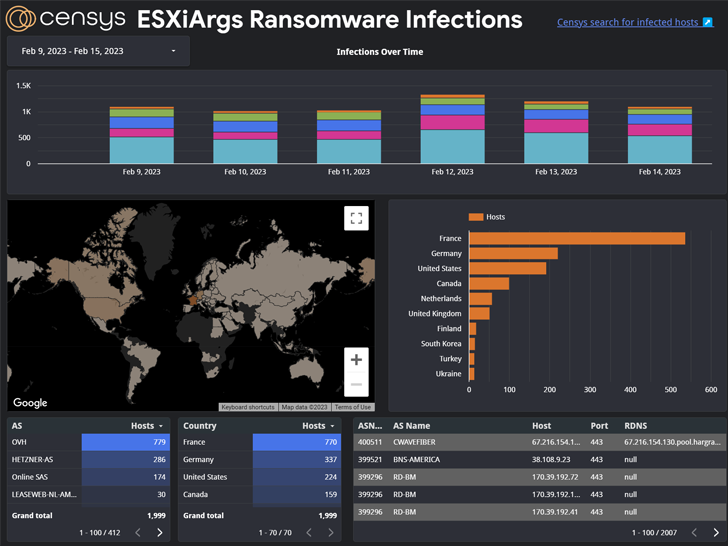Hey 👋 there, cyber friends!
Welcome to this week’s cybersecurity newsletter, where we aim to keep you informed and empowered in the ever-changing world of cyber threats.
In today’s edition, we will cover some interesting developments in the cybersecurity landscape and share some insightful analysis of each to help you protect yourself against potential attacks.
1. Apple 📱 Devices Hacked with New Zero-Day Bug – Update ASAP!
Have you updated your Apple devices lately? If not, it’s time to do so, as the tech giant just released security updates for iOS, iPadOS, macOS, and Safari. The update is to fix a zero-day vulnerability that hackers have been exploiting.
This vulnerability, tracked as CVE-2023-23529, is related to a type confusion bug in the WebKit browser engine. What does this mean? Well, it means that if you visit a website with malicious code, the bug can be activated, leading to arbitrary code execution. In other words, hackers can take control of your device and access all your data.
It’s scary to think that simply visiting a website could lead to a security breach. This is why it’s essential to keep your devices updated with the latest security patches.
2. Don’t Be the Next Victim: ESXiArgs Ransomware 💥 Strikes 500+ New European Targets
Another expertly-crafted comprehensive coverage by Ravie Lakshmanan.
In a recent discovery by cybersecurity firm Censys, more than 500 hosts have fallen victim to the ESXiArgs ransomware strain. Most of these compromised hosts are located in France, Germany, the Netherlands, the U.K., and Ukraine. What’s particularly concerning is that Censys found two hosts with ransom notes dating back to mid-October 2022, shortly after ESXi versions 6.5 and 6.7 reached their end of life.
This means that the attackers behind ESXiArgs have been active for several months, and were able to gain a foothold in these hosts during a time when they were no longer receiving security updates or patches. It also shows that ransomware attacks can take a while to gain traction, and can often go undetected for months before they are discovered.
What’s even more alarming is that the ransom notes on the two hosts were updated on January 31, 2023, with a revised version that matches the ones used in the current wave of attacks. This suggests that the attackers have been refining their tactics and improving their ransomware strain to make it more effective.
Ransomware attacks like ESXiArgs can be devastating for organizations, causing data loss, financial losses, and reputational damage. It’s important for organizations to stay vigilant and ensure that their systems are always up to date with the latest security patches and updates.
Additionally, having a solid backup and disaster recovery plan can help organizations quickly recover from an attack and minimize its impact.
3. DDoS Attack Breaks Record – 71 Million 😮 Requests Per Second!
Cloudflare, a web infrastructure company, has reported that they have successfully stopped a massive distributed denial-of-service (DDoS) attack. This attack, which peaked at over 71 million requests per second, is the largest HTTP DDoS attack that has been recorded so far, breaking the previous record of 46 million requests per second.
The attack was so large that Cloudflare has dubbed it a “hyper-volumetric” DDoS attack. The attack was targeted at websites that were secured by Cloudflare’s platform, and it is believed that the attack originated from a botnet that was made up of more than 30,000 IP addresses from various cloud providers.
This attack is a reminder that DDoS attacks remain a significant threat to websites and online services, and it is crucial for companies to have robust security measures in place to protect against such attacks.
Subscribe to our Daily Newsletters
We hope you’ve been enjoying our weekly cybersecurity newsletter as much as we love making it informative and easy to understand. But, we also understand the importance of staying on top of the latest threats and vulnerabilities that can harm your digital life.
That’s why we highly recommend subscribing to our daily news updates via email. You’ll receive the latest cybersecurity news, insights, resources, offers and analysis straight to your inbox every day.
4. Microsoft 🖥️ Releases Urgent Patches – Update Your Windows ASAP!
Microsoft has been busy this week, releasing security updates to fix a whopping 75 vulnerabilities in its products. That’s a lot of potential ways for cybercriminals to wreak havoc on our devices and systems!
Three of the flaws have already been exploited in the wild, so it’s crucial that users update their software as soon as possible. In total, nine of the vulnerabilities are rated as Critical, which means they could allow attackers to take over a device remotely.
But wait, there’s more! 37 of the flaws are what are known as remote code execution (RCE) vulnerabilities. These are particularly dangerous because they allow attackers to execute code on a victim’s device without any interaction or permission.
So, if you’re using any Microsoft products, it’s best to update them as soon as possible.
5. Linux 🐧 and IoT Devices Under Attack by V3G4 Mirai Botnet
A new variant of the infamous Mirai botnet has been spotted wreaking havoc in the world of Linux and IoT devices. This new version, dubbed V3G4 by the experts at Palo Alto Networks Unit 42, is making use of 13 security vulnerabilities to spread itself far and wide.
As we know, the Mirai botnet has a notorious history, having been responsible for several high-profile attacks in the past. This new variant only serves to underscore the importance of keeping our devices and systems up to date with the latest security patches and measures.
6. Your Favorite Apps Could be Carrying a Dangerous Virus – 🚨 Stay Alert!
Cybercriminals have launched a new type of attack targeting Chinese-speaking individuals in Southeast and East Asia. Using rogue Google Ads, they are tricking people looking for popular applications like Google Chrome, WhatsApp, and Skype and directing them to fake websites that download malware onto their machines.
The attacks are particularly insidious because they use seemingly legitimate Google Ads to lure in victims. The malware being downloaded is a remote access trojan called FatalRAT, which gives the attackers complete control over the infected machine.
Security researchers are urging people to be cautious when downloading applications, especially from unfamiliar websites.
The Hacker News / Upcoming Webinars
Are you tired of falling victim to file-based threats and not knowing how to protect your sensitive data? Or are you struggling to keep up with the ever-evolving security challenges of SaaS applications?
Well, have no fear because we have two exciting webinars coming up that will help you bust some common myths and tackle the top security challenges of 2023!
- Our first webinar, “A MythBusting Special: 9 Myths about File-based Threats“, will help you separate fact from fiction when it comes to file-based threats. You’ll learn the truth about what they are, how they work, and most importantly, how to prevent them from infiltrating your systems.
- And if you’re a fan of SaaS applications but find yourself grappling with security issues, then our second webinar, “How to Tackle the Top SaaS Security Challenges of 2023“, is the one for you! Our experts will walk you through the most pressing security challenges of 2023, and provide practical tips to help you stay ahead of the game.
Both of these webinars are free and packed with valuable information that you won’t want to miss. So, don’t wait – sign up now and join us for an informative and engaging cybersecurity discussion!
Well folks, that’s all for this week’s cybersecurity newsletter.
As always, remember that cybersecurity is not just a one-time event or a quick fix. Whether it’s using strong passwords, regularly updating your software, or staying aware of phishing scams, every small action can make a big difference in safeguarding your online security.
So keep those firewalls up, keep those updates coming, and let’s continue to stay curious, stay vigilant, and stay safe in the ever-changing digital landscape.
And above all, remember that cybersecurity is a community effort. We appreciate your readership and feedback and are always here to answer your questions and address your concerns. Please let us know if you have any suggestions for topics you’d like us to cover in future newsletters.
Thank you for joining us on this cybersecurity journey, and we look forward to sharing more insights and updates with you in the weeks ahead. Until next time, stay cyber-secure!


